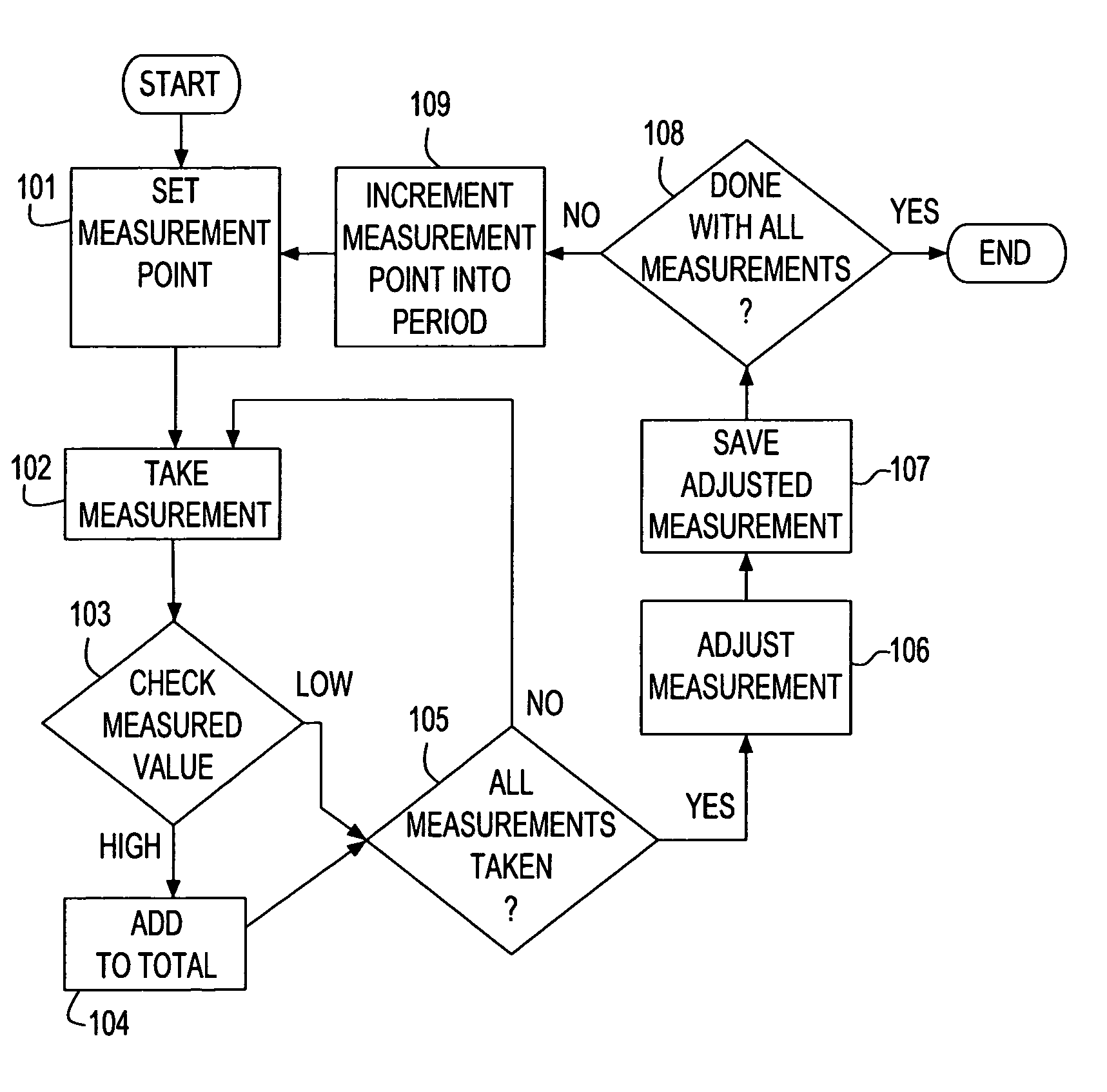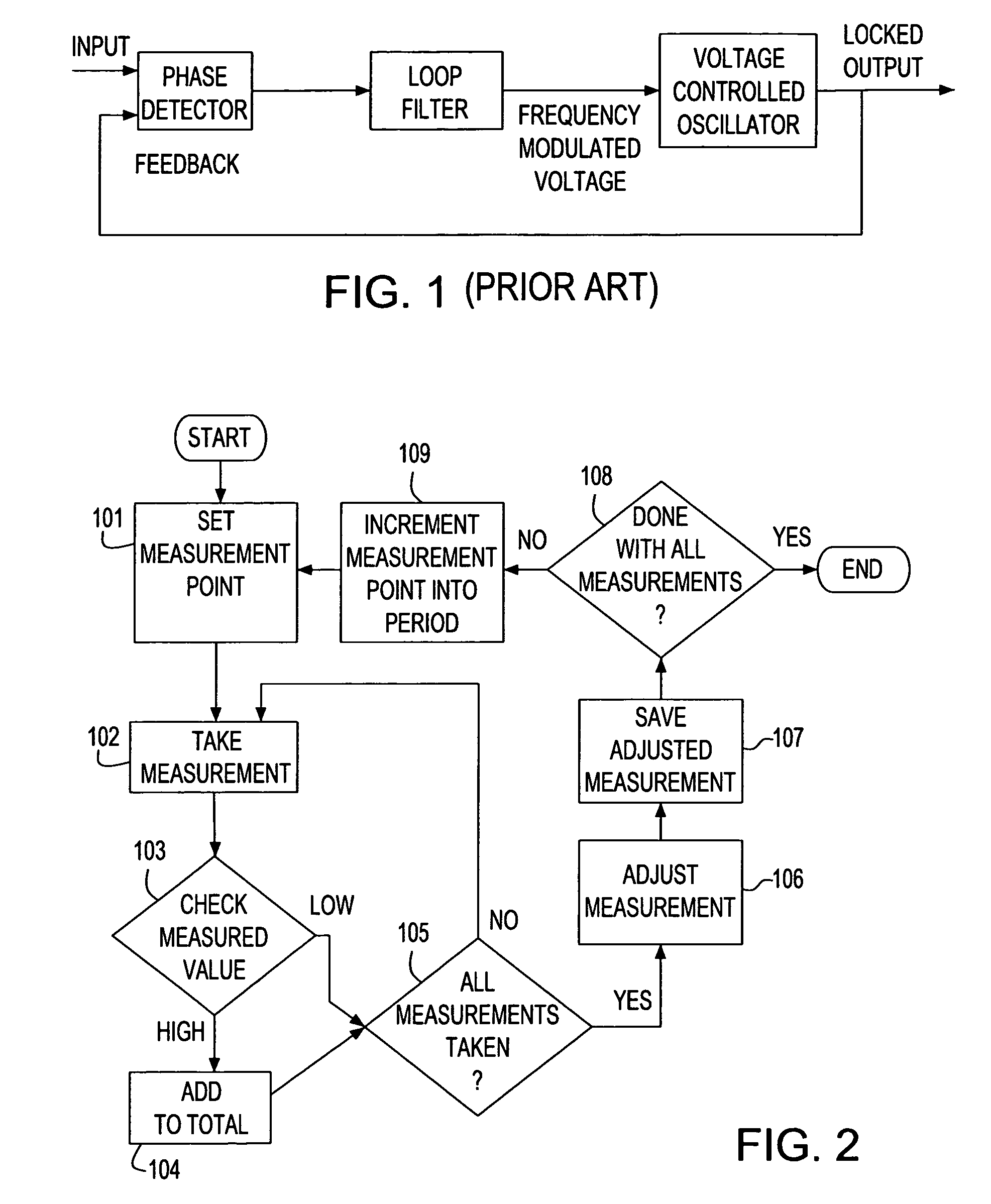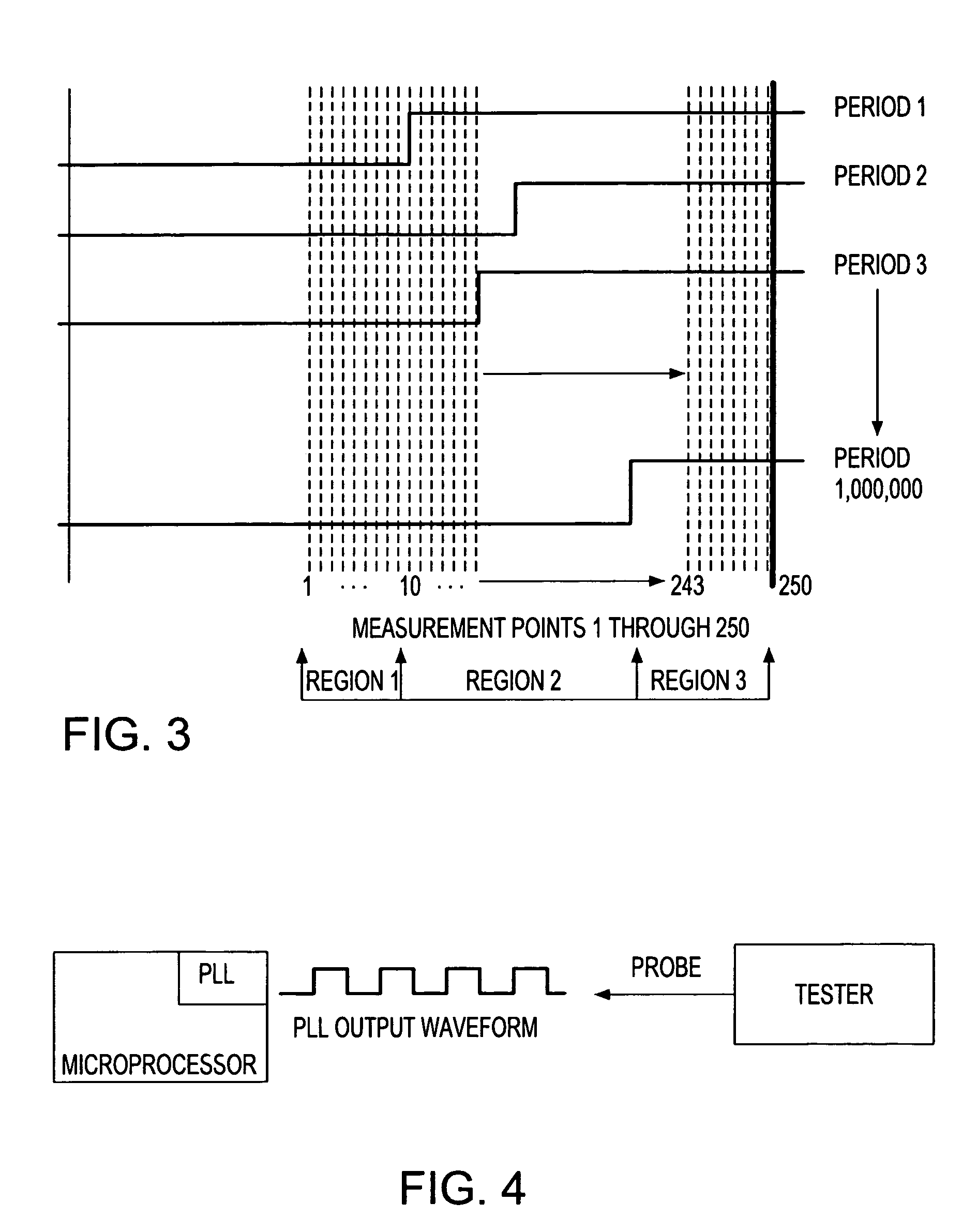Jitter measurements for repetitive clock signals
a clock signal and jitter measurement technology, applied in the direction of noise figure or signal-to-noise ratio measurement, instruments, testing circuits, etc., can solve the problems of critical timing of events, circuits that are time dependent, especially susceptible to jitter problems,
- Summary
- Abstract
- Description
- Claims
- Application Information
AI Technical Summary
Benefits of technology
Problems solved by technology
Method used
Image
Examples
Embodiment Construction
[0025] The invention provides a solution to the above problems by way of a novel method for measuring the jitter and assessing its effect. The ensuing analysis and evaluation will be described using for illustrative purposes only, a Teradyne tester J973. The concept applies to other test platforms besides the Teradyne tester and other waveforms besides PLL clock signals.
[0026] The basic flow chart representing the preferred embodiment of the present invention is illustrated in FIG. 2. Shown are the actual steps to perform the necessary measurements. Alongside with the step embodying the present invention will also be shown accompanying examples to provide a proper understanding of what happens at the various steps.
[0027] While the invention is preferably used to measure the jitter on any repetitive pulse string, for illustrative purposes, a phase locked loop (PLL) circuit will be used. The measurement of jitter will be performed on the tester, as previously stated.
[0028] The test...
PUM
 Login to View More
Login to View More Abstract
Description
Claims
Application Information
 Login to View More
Login to View More - R&D
- Intellectual Property
- Life Sciences
- Materials
- Tech Scout
- Unparalleled Data Quality
- Higher Quality Content
- 60% Fewer Hallucinations
Browse by: Latest US Patents, China's latest patents, Technical Efficacy Thesaurus, Application Domain, Technology Topic, Popular Technical Reports.
© 2025 PatSnap. All rights reserved.Legal|Privacy policy|Modern Slavery Act Transparency Statement|Sitemap|About US| Contact US: help@patsnap.com



